Pipridae
Manakins
John Harshman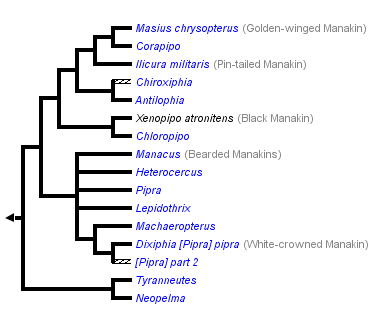


This tree diagram shows the relationships between several groups of organisms.
The root of the current tree connects the organisms featured in this tree to their containing group and the rest of the Tree of Life. The basal branching point in the tree represents the ancestor of the other groups in the tree. This ancestor diversified over time into several descendent subgroups, which are represented as internal nodes and terminal taxa to the right.

You can click on the root to travel down the Tree of Life all the way to the root of all Life, and you can click on the names of descendent subgroups to travel up the Tree of Life all the way to individual species.
For more information on ToL tree formatting, please see Interpreting the Tree or Classification. To learn more about phylogenetic trees, please visit our Phylogenetic Biology pages.
close boxDiscussion of Phylogenetic Relationships
The traditional genus Pipra is polyphyletic. One of its former members, Pipra pipra, has the available genus name Dixiphia. Other former members may form a clade with Dixiphia and might also be conveniently assigned to that genus; another available name is Ceratopipra (Prum 1992). I avoid the choice, and merely put Pipra in brackets to show that another name is necessary.
Tyranneutes and Neopelma have been considered to belong to Tyrannidae in some classifications.
References
Bostwick, K. S. 2000. Display behaviors, mechanical sounds, and evolutionary relationships of the Club-winged Manakin (Machaeropterus deliciosus). Auk 117(2):465-478.
Gill, F. and M. Wright. 2006. Birds of the World: Recommended English Names. Princeton NJ: Princeton University Press.
Gill, F., Wright, M. & Donsker, D. 2009. IOC World Bird Names (version 2.2). Available at http://www.worldbirdnames.org/ [Accessed 18 Oct 2009].
Ohlson, J., J. Fjeldså, and P. G. P. Ericson. 2008. Tyrant flycatchers coming out in the open: Phylogeny and ecological radiation of Tyrannidae (Aves, Passeriformes). Zoologica Scripta 37:315-335.
Prum, R. O. 1990. Phylogenetic analysis of the evolution of display behavior in the neotropical manakins (Aves: Pipridae). Ethology 84: 202-231.
Prum, R. O. 1992. Syringeal morphology, phylogeny, and evolution of the Neotropical manakins (Aves: Pipridae). American Museum of Natural History Novitates 3043: 1-65.
Prum, R. O. 1994. Phylogenetic analysis of the evolution of alternative social behavior in the manakins (Aves, Pipridae). Evolution 48(5):1657-1675.
Rêgo, P. S., J. Araripe, M. L. V. Marcelliano, I. Sampaio, and H. Schneider. 2007. Phylogenetic analyses of the genera Pipra, Lepidothrix and Dixiphia (Pipridae, Passeriformes) using partial cytochrome b and 16S mtDNA genes. Zoologica Scripta 36:565-575.
Snow, D. 2004. Family Pipridae (Manakins). Pages 110–169 in Handbook of the Birds of the World. Vol. 8: Broadbills to Tapaculos. J. del Hoyo, A. Elliott, and D.A. Christie, eds. BirdLife International and Lynx Editions, Cambridge, UK and Barcelona.
Tello, J. G., R. G. Moyle, D. J. Marchese, and J. Cracraft. 2009. Phylogeny and phylogenetic classification of the tyrant flycatchers, cotinga, manakins, and their allies (Aves: Tyrannides). Cladistics 25:1-39.
Information on the Internet
- Richard O. Prum's research on manakins. Yale University.
- Kimberly S. Bostwick's research on manakins. Cornell University.
- Jungle Dancers. PBS Nature. Deep Jungle: New Frontiers.
Title Illustrations

| Scientific Name | Manacus manacus |
|---|---|
| Location | Brazil |
| Specimen Condition | Live Specimen |
| Sex | Male |
| Source | White-bearded Manakin (Manacus manacus) |
| Copyright |
© Arthur Grosset

|
| Scientific Name | Antilophia bokermanni |
|---|---|
| Location | Chapada do Araripe - Ceará, Brazil |
| Specimen Condition | Live Specimen |
| Source | Antilophia bokermanni_Araripe Manakin |
| Source Collection | Flickr |
| Copyright |
© 2007 Ciro Albano

|
| Scientific Name | Chiroxiphia caudata |
|---|---|
| Location | Garrafão - Teresópolis, Rio de Janeiro, Brazil |
| Acknowledgements | Foto que recebeu o 3º lugar no concurso SOS Mata Atlântica 2008 |
| Specimen Condition | Live Specimen |
| Behavior | Uma cena incrível, a dança dos tangarás, chamada "lekking". A fêmea fica do lado esquerdo, observando a dança, e um dos machos é o "escolhido". |
| Sex | males and female |
| Source | Lekking de Tangarás |
| Source Collection | Flickr |
| Copyright | © 2008 Joao Quental |
About This Page
Correspondence regarding this page should be directed to John Harshman at
Page copyright © 2009
 Page: Tree of Life
Pipridae. Manakins.
Authored by
John Harshman.
The TEXT of this page is licensed under the
Creative Commons Attribution-NonCommercial License - Version 3.0. Note that images and other media
featured on this page are each governed by their own license, and they may or may not be available
for reuse. Click on an image or a media link to access the media data window, which provides the
relevant licensing information. For the general terms and conditions of ToL material reuse and
redistribution, please see the Tree of Life Copyright
Policies.
Page: Tree of Life
Pipridae. Manakins.
Authored by
John Harshman.
The TEXT of this page is licensed under the
Creative Commons Attribution-NonCommercial License - Version 3.0. Note that images and other media
featured on this page are each governed by their own license, and they may or may not be available
for reuse. Click on an image or a media link to access the media data window, which provides the
relevant licensing information. For the general terms and conditions of ToL material reuse and
redistribution, please see the Tree of Life Copyright
Policies.
- First online 28 November 2009
- Content changed 28 November 2009
Citing this page:
Harshman, John. 2009. Pipridae. Manakins. Version 28 November 2009 (under construction). http://tolweb.org/Pipridae/67995/2009.11.28 in The Tree of Life Web Project, http://tolweb.org/




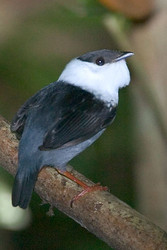
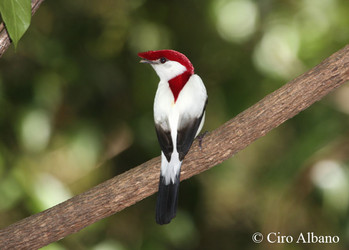
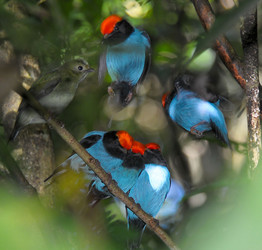

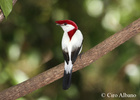


 Go to quick links
Go to quick search
Go to navigation for this section of the ToL site
Go to detailed links for the ToL site
Go to quick links
Go to quick search
Go to navigation for this section of the ToL site
Go to detailed links for the ToL site